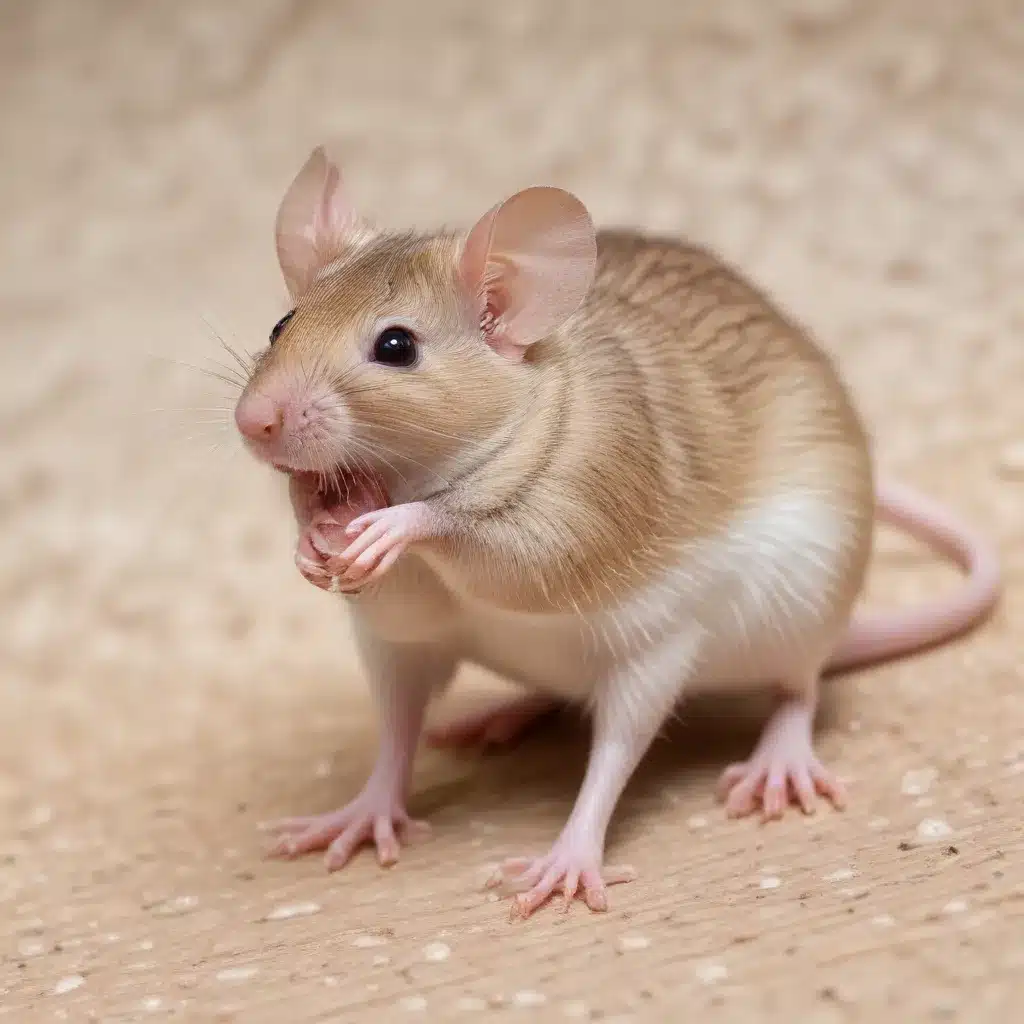
The Vital Role of Coughing and Its Neural Underpinnings
Coughing is a crucial respiratory defense mechanism that protects the airways from harmful pathogens and irritants. This vital reflex is typically triggered by the activation of vagal sensory neurons innervating the larynx and tracheobronchial tree. While extensive research in larger mammalian models has provided critical insights into the neural control of coughing, the underlying central pathways and circuits remain incompletely understood.
Combining advanced techniques like whole-body plethysmography, optogenetics, and in vivo calcium imaging, recent studies have begun to unravel the brainstem circuits that orchestrate cough-like defensive behaviors in mice. These findings shed new light on the complex neural regulation of this essential airway protection mechanism.
Establishing a Robust Cough Monitoring Paradigm in Mice
Traditionally, cough studies have relied on larger animal models like cats, dogs, rabbits, and guinea pigs. However, the suitability of mice for cough research has been a subject of debate. To overcome this challenge, researchers have developed a comprehensive paradigm to quantify cough-like behaviors in conscious mice.
By combining whole-body plethysmography, audio, and video tracking, the team was able to reliably detect and analyze cough-like responses in mice upon exposure to various tussigenic stimuli, such as nebulized citric acid, capsaicin, or ammonia gas. This multimodal approach allowed for the accurate identification and characterization of cough-like events, which were distinguished from other airway defensive reflexes like sneezing.
Interestingly, the researchers found that ammonia gas was particularly effective in eliciting robust and reproducible cough-like behaviors in mice, making it a preferred choice for subsequent experiments.
Mapping Cough-Related Neural Activity in the Brainstem
To identify the key brainstem regions involved in mediating cough-like behaviors, the researchers employed a genetic labeling technique called TRAP2. By exposing TRAP2::Ai9 transgenic mice to ammonia gas, they were able to visualize the patterns of neuronal activation in the brainstem, revealing prominent activity in several nuclei, including the nucleus of the solitary tract (NTS), the spinal trigeminal nucleus (SP5), the ventral respiratory group (VRG), the ventrolateral periaqueductal gray (vlPAG), and the parabrachial nucleus (PBN).
Intriguingly, further investigation using in vivo fiber photometry revealed that the neural activity in the NTS and VRG was tightly correlated with the timing of cough-like events, consistent with their established roles in respiratory control. Surprisingly, the researchers also observed a strong correlation between neuronal activity in the SP5C (caudal part of the spinal trigeminal nucleus) and cough-like behaviors, suggesting a previously unrecognized role for this brainstem region in the regulation of cough.
The Crucial Role of the SP5C in Triggering Cough-like Behaviors
To directly test the functional significance of the SP5C in cough-like responses, the researchers employed a genetic approach to impair synaptic outputs from this nucleus. By utilizing neurexin1/2/3 conditional knockout transgenic mice, they were able to selectively disrupt synaptic transmission in the SP5C.
Remarkably, when these mice were exposed to ammonia gas, they exhibited a significant reduction in cough-like behaviors compared to control animals. This finding provided strong evidence that the SP5C plays a crucial role in triggering cough-like defensive responses in mice.
To further corroborate this, the researchers used a chemogenetic strategy to selectively inhibit the SP5C. Consistent with the previous results, silencing the SP5C effectively abolished the cough-like responses elicited by ammonia gas exposure.
Coordinating Cough-like Behaviors through Downstream Circuits
The researchers also investigated the role of the VRG, a well-established “cough center” in the brainstem, in mediating cough-like behaviors. Interestingly, they found that impairing synaptic outputs from the VRG, similar to the SP5C, also markedly blocked the cough-like responses triggered by ammonia gas.
These results suggest that both the SP5C and VRG are crucial components of the neural circuit controlling cough-like defensive behaviors in mice. It is likely that the SP5C acts as a key relay station, receiving and integrating sensory inputs from the airways, and then coordinating the downstream VRG and other medullary nuclei to elicit the characteristic motor patterns of cough.
Insights and Implications for Understanding Cough Regulation
The findings from this comprehensive study provide important insights into the central neural mechanisms underlying cough-like behaviors in mice. The identification of the SP5C as a previously unrecognized, yet critical, node in the brainstem circuit controlling cough expands our understanding of the complex neural regulation of this vital airway defense reflex.
Furthermore, the ability to reliably and quantitatively assess cough-like responses in mice opens up new avenues for investigating the neural basis of cough hypersensitivity, which is a hallmark of various respiratory disorders, such as asthma and chronic cough. By leveraging the genetic tools and circuit-level analysis techniques employed in this study, future research can delve deeper into the pathological mechanisms and potential therapeutic targets for cough-related conditions.
Overall, this work represents a significant advance in our understanding of the central neural pathways that orchestrate cough-like defensive behaviors, setting the stage for further exploration of the complex airway-brain interactions that maintain respiratory homeostasis and protect the airways from harm.
Conclusion
The ability to reliably and quantitatively assess cough-like behaviors in mice, combined with the identification of the SP5C as a crucial node in the brainstem circuit controlling cough, represents a major step forward in our understanding of the neural regulation of this vital airway defense reflex. These findings pave the way for future investigations into the mechanisms underlying cough hypersensitivity and the development of targeted therapies for cough-related respiratory disorders.
For the latest updates and insights on IT solutions, computer repair, and technology trends, be sure to visit IT Fix – your go-to resource for practical, expert-level guidance.












